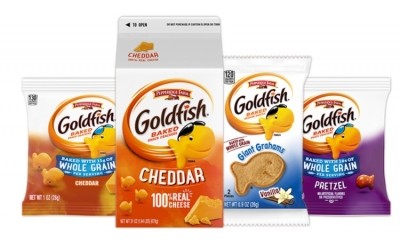The power of a name: What can snack brands learn from Campbell’s bold rebrand?

The Campbell Soup Company has been a household name for 155 years, synonymous with comfort, nostalgia and of course, soup.
However, in a bold move, the New Jersey company has announced a rebranding strategy to drop the word Soup from its name, signaling a shift in its brand identity and future direction. Soon to be known simply as The Campbell Company – pending shareholder approval in November – this change has sparked widespread conversation.
To understand the implications of this decision, we unpacked insight from Dr Yanliu Huang, professor of Marketing at Drexel University’s LeBow College of Business published on the university’s blog site.
Why rebrand now?
After more than a century and a half of market dominance in the soup category, many might wonder why Campbell’s would choose to rebrand. The answer lies in the evolving nature of consumer behavior and the company’s changing portfolio.
Dr. Huang explains, “Rebranding is often driven by shifts in market dynamics and Campbell’s recent decision reflects an effort to reposition the brand in the minds of consumers. The goal is not just to refresh the image but also to highlight that Campbell’s is much more than just soup.”
Indeed, over the years, Campbell’s has expanded beyond its signature soups into a diverse portfolio that includes some of the most popular snack and meal brands on the market, such as Goldfish, Kettle Brand, Pepperidge Farm, Prego and V8. In fact, Campbell’s snack brands now make up nearly half of the company’s total sales volume, justifying the need to modernize its brand to reflect this shift.
In a statement, Campbell’s CEO Mark Clouse said the rebrand would “better reflect the full breadth of the company’s portfolio”, reinforcing the company’s broader vision.
Dr Huang agrees the timing is appropriate.
“It’s about ensuring that Campbell’s brand name stays relevant in today’s marketplace. By dropping the word Soup, it is effectively telling consumers that it isn’t a single-product company anymore.”
The risks and rewards of rebranding
While a brand refresh like Campbell’s can breathe new life into a legacy company, it’s not without risk.
“Rebranding is a double-edged sword,” says Dr Huang.
“On the one hand, it provides an opportunity to update customer perceptions and realign the brand with its current product offerings. On the other hand, there is a risk of diluting the core brand identity that consumers have come to trust.”
In the case of Campbell’s, its name is deeply intertwined with its history and reputation for delivering comforting, wholesome meals. There’s a risk that consumers might feel disoriented or even alienated by the change, especially those with a strong emotional connection to the brand.
However, if done correctly, rebranding can result in a stronger market position. A refreshed brand identity can help companies stay relevant in a rapidly changing marketplace.
“Rebranding isn’t just about updating a name or logo; it’s about signaling to consumers and stakeholders that the company is evolving,” says Dr Huang.
“When a company has diversified its offerings as significantly as Campbell’s has, a name change can help clear up misconceptions and make it easier for consumers to understand everything the brand represents.”
This point is well illustrated by other notable rebranding efforts, such as Starbucks’ decision to drop the word Coffee from its logo in 2011. The move helped the company signal its expansion into other beverage categories and food items. Dunkin’ Donuts followed a similar path in 2019, becoming simply Dunkin’ to emphasize its focus on beverages. Both rebranding efforts were met with initial skepticism but ultimately contributed to the companies’ continued success.
Lessons for other brands
There are important lessons to be learned from Campbell’s bold move.
As Dr Huang notes, “In a highly competitive market, staying static is not an option. Brands must adapt to remain relevant.”
She emphasizes that rebranding is often more about reflecting a company’s long-term strategy and vision than a reaction to short-term market trends.
“Brands that successfully refresh their identity do so because they have a clear understanding of where they are heading. Campbell’s rebranding is not just about dropping a word; it’s about positioning the company for future growth.”
For businesses in competitive markets, failing to adapt can lead to obsolescence. A brand that evolves in response to consumer preferences and industry trends is more likely to stay top-of-mind.
“If Campbell’s had remained solely focused on soup, they might have been left behind as consumers’ preferences changed over time,” says Dr Huang.
“By rebranding, they are signaling that they are ready for what’s next.”
Impact on customer loyalty and brand equity
One of the most crucial factors in any rebranding effort is how it will impact customer loyalty. Campbell’s is banking on its rebranding to attract new customers while retaining its existing loyal base.
Dr Huang explains that rebranding can actually strengthen brand equity, which refers to the value that customers assign to a brand based on their knowledge and experiences with it.
“Consumers build associations in their minds based on their interactions with a brand,” she says.
“Over time, these associations become part of the brand’s knowledge structure. A well-executed rebrand can enhance these associations and even create new ones, ultimately strengthening brand equity.”
That said, any disruption to long-standing brand elements carries some level of risk. If customers feel the rebrand strays too far from the company’s original identity, it could lead to confusion or a loss of trust. Campbell’s will need to carefully manage the transition to ensure that its core message – that it’s still a trusted provider of high-quality meals and snacks – remains intact.
The importance of timing and strategy
Rebranding is a complex process that requires careful consideration of various internal and external factors. For Campbell’s, the decision to rebrand now appears to be a strategic move aimed at positioning the company for long-term growth.
As Dr Huang notes, “Timing is critical. A company needs to assess whether market conditions and consumer preferences support a brand refresh.”
Campbell’s has chosen a time when it is experiencing significant growth in its snack and meal brands, making now an opportune moment to reflect these changes in its brand identity. The company’s rebranding strategy is also likely intended to ensure that it stays competitive in a crowded food market where legacy brands must continuously innovate to maintain their market share.
A strategic move
The Campbell Soup Co’s rebranding strategy to become The Campbell Company is a significant and potentially transformative decision.
By dropping Soup from its name, Campbell’s is signaling to the world that it’s more than just a soup company – it’s a diversified food company with a broad portfolio of products. While the rebranding carries risks, it also presents an opportunity to modernize the company’s image and better align with its current business strategy.
“The success of a rebrand depends on how well a company can balance maintaining its core identity while signaling innovation and evolution,” says Dr Huang.
For Campbell’s, the name change could very well be the key to future growth and continued relevance in a fast-changing industry.













